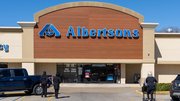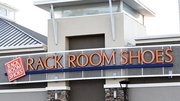Article
Retail in 2015: The age of uncertainty
Results of a new survey show a disconnect between what customers say they want, and what retailers think they want.

October 22, 2014 by James Bickers — Editor, Networld Alliance
It's been a tough decade for the retail industry. What is ostensibly the oldest business in the history of mankind got turned on its ear with the dawn of the World Wide Web, and it's still trying to find its footing from the resulting turmoil. Brands that were the dominant players in their category are facing extinction. The shopping mall — an American institution once as beloved as baseball and apple pie — is now most likely to garner attention for sitting vacant, trees and weeds sprouting from their cracked concrete floors. One word that can succinctly sum up the mood: uncertainty.
If you follow the retail press, you'll know that retailers and the companies that support them are trying everything they can to turn this around, to hang onto the business that has been gradually siphoned off by e-commerce and heightened competition. You can almost hear the boardroom conversations …
"What about an app? Do we have an app?"
"Yeah, we have an app. Can't get people to use it, though. Should we maybe get another one?"
"Two apps? Sure, why not? And hey, what are beacons — I think we need beacons in the stores."
"Beacons! I've heard of those. Can we get our apps on the beacons?"
"I think so. It's something to do with bitcoins, right?"
… but as is often the case, the motivation for doing these things can be wrong-headed. There is often a disconnect between what a consumer wants, and what a retailer thinks the consumer wants. Did your customers tell you they would like an app from you, or did you develop one because everybody else is doing it?
To get inside these ideas and poke around a bit, we did two separate surveys for this year's Future Trends report, one among retailers and one among shoppers. The consumers told us some very interesting things:
- Most shoppers (86 percent) said that a retailer having an online presence is "important," "very important" or "critical."
- Nearly three-quarters of them have "showroomed," but of those doing so, three-quarters said they had only done it a few times over the past 12 months. Frequent showroomers — those that did it 20 or more times in that period — made up less than 2 percent of the group.
- Shipping charges have a "significant impact" on where 45 percent of the group decide to buy. Only 4 percent said shipping charges don't factor into their decision making.
- 63 percent have downloaded a retailer's app — and a third of those say they rarely use them.
The retailers we surveyed had other things weighing on their minds:
- Three-quarters of them are putting tablets and smartphones in associates' hands to assist customers in the store, or are planning to.
- Two-thirds either have plans to replace their cash registers with mobile devices, or are already doing so.
- 82 percent have an app of some sort. The most common app purposes are store location and product information.
- 86 percent either have, or are planning to have, some sort of exclusive discount or perk that is only available to loyalty club members.
- 75 percent say they have an "effective" employee training program. Which is to say, 25 percent don't.
- When asked if any of the products they sell are touched at any point by child labor, 25 percent don't know. 73 percent say no. And two percent said yes.
As we go to press with this, beacons and the in-store marketing strategies they enable are probably the biggest buzz, with some companies announcing major deployments, while others search their souls for how they could use them. But in our survey, 65 percent of retailers said they have no interest in beacons.
Another noteworthy buzz/reality disconnect appears to be Bitcoin and other virtual currencies. Coverage has been heavy in both consumer and business media, but only 10 percent of the retailers we surveyed said they had any interest in accepting Bitcoin.
In so many different ways, it's going to be fascinating to see what we're talking about at this time next year, which strategies and technologies have made a difference and which have been abandoned. What do you think? We'd love to hear your thoughts.
(This essay, and the full results of the survey, appear in Retail Future Trends 2015, recently published by Retail Customer Experience.)





